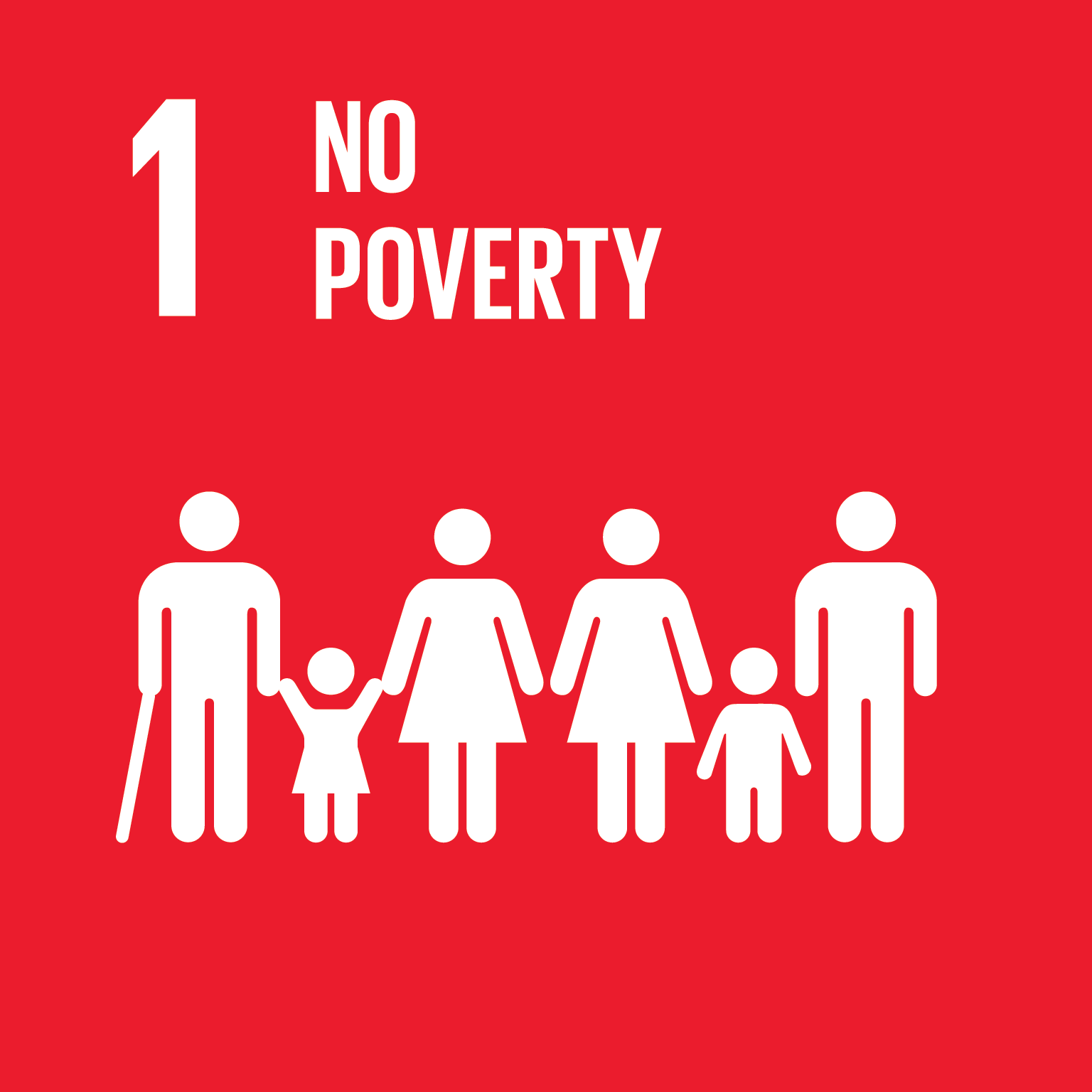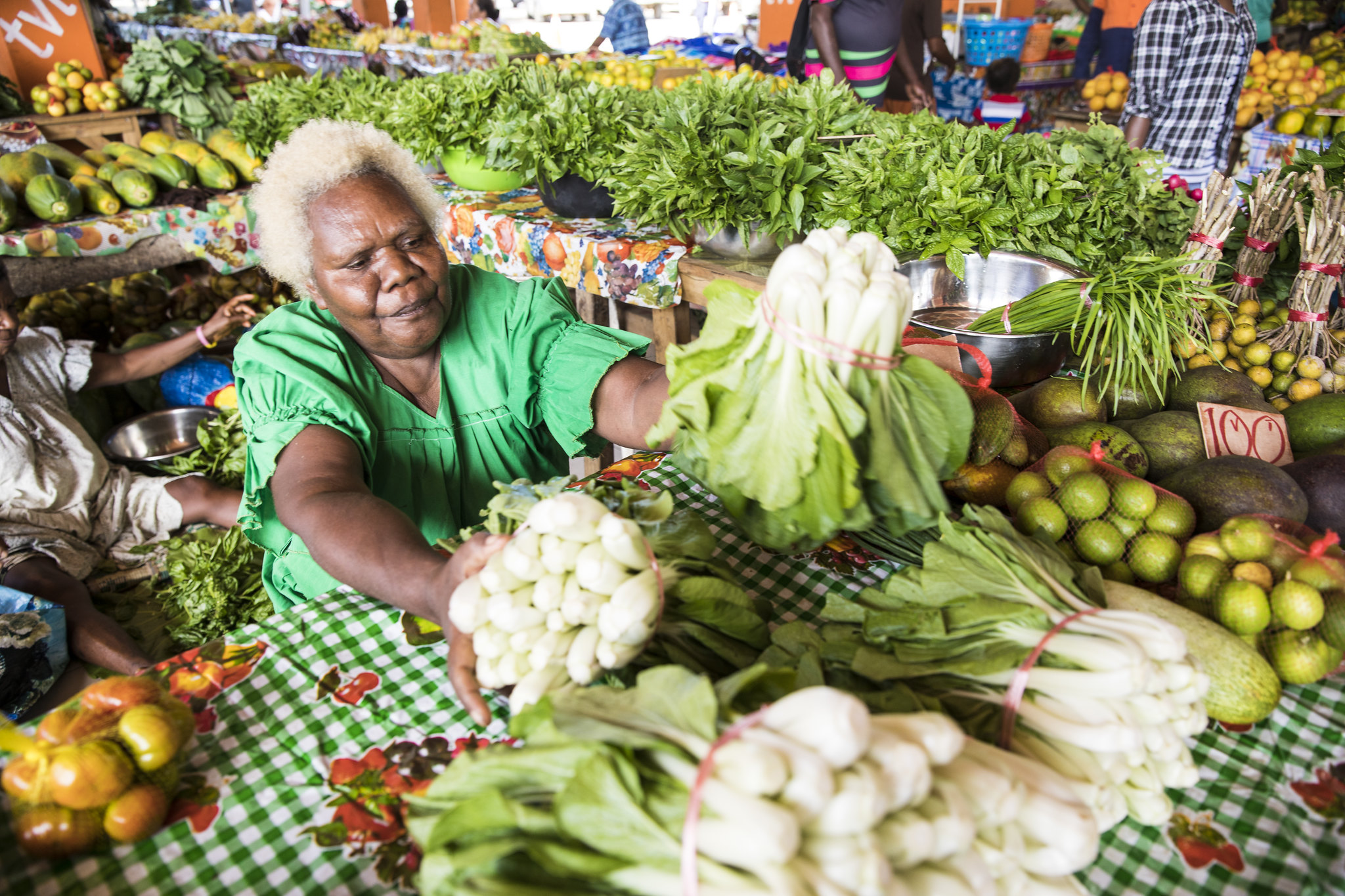 The Pacific Financial Inclusion Programme (PFIP)
Helping to provide sustainable financial services to low-income households
The Pacific Financial Inclusion Programme (PFIP)
Helping to provide sustainable financial services to low-income households

Challenges
Globally, about 1.7 billion people remain unbanked, with two billion - more than half of the world’s working adults – still excluded from formal financial services. This is most acute among low-income populations in emerging and developing economies.
The Pacific Island countries face a number of challenges ranging from climate vul- nerability to economic stagnation. All of this makes it one of the least developed and most financially excluded regions in the world. In many island countries, poor infrastructure and difficult terrain mean that banks are physically inaccessible to the population. In addition to geographic barriers, these countries face gender barri- ers, lack of financial education and consumer protection guidelines, low popula- tion density, low levels of technical expertise and vulnerability to natural hazards.
The financial inclusion landscape in the Pacific region must undergo significant development to address these challenges. Pacific Island countries need to build a foundation for an enabling policy environment, strong institutional capacity and the ability to incubate a range of financial services. In addition, collaboration and cooperation by different actors is an important factor in overcoming the chal- lenges and achieving the SDGs.
Towards a Solution
Implemented by the United Nations Capital Development Fund (UNCDF) and the United Nations Development Programme (UNDP), the Pacific Financial Inclusion Programme (PFIP) aims to increase the number of low-income Pacific Islanders who use formal financial services, with the overall vision of fostering inclusive economic growth in the region. Its focus lies in supporting financial service providers to innovate with products and services for customers, assisting governments to create an enabling policy environment for financial inno- vation and consumer empowerment.
The following are the associated outcome areas and corresponding strat- egies through which PFIP has contributed towards achieving the overall vision of inclusive economic growth within the region:
Î Better Policies, Regulations and Coordinated Actions: Assisting in estab- lishing an enabling policy and regulatory environment in each country covered, backed by a robust national financial inclusion strategy that facilitates the expansion of appropriate, innovative and secure financial products and delivery channels for low-income Pacific Islanders.
Î Increased Financial Access: Expanding financial access through prod- uct/channel innovations that meet the financial service needs of low-in- come Pacific Islanders, including women and youth, while at the same time resulting in the sustainable delivery of financial services.
Î Better Market Information and Access to Knowledge: Enhancing the sec- tor’s understanding of products, channels and business models suited to the needs of low-income Pacific Islanders through demand, supply and impact evaluation studies.
Î .Informed and Competent Consumers: Strengthening financial com- petencies of clients so they can better leverage business and financial access opportunities to improve their livelihoods and establish simple, transparent consumer protection measures.
PFIP operates in the Pacific region, specifically in Fiji, Papua New Guinea, Samoa, the Solomon Islands, Timor-Leste, Tonga and Vanuatu, and has funded 44 projects with financial service providers who have innovated with technology and products, enrolling over two million customers in services such as agency banking, mobile wallets, micro insurance, micro loans, remittances and saving groups. Women account for over 975,000 of all clients enrolled, representing significant progress in reducing the gen- der gap that exists in the Pacific. The programme integrates a South-South cooperation element by bringing cross-border lessons and experiences to solve the developmental challenges of the PICs. In addition, to implement mobile banking and agent banking models, UNCDF and PFIP partnered with private sector operators, specifically with every major telecom and commercial bank in the South Pacific.
According to the UNDP PFIP Final Evaluation, by December 2019 the pro- gramme had achieved 52 percent of its outreach targets with 779,633 con- sumers enrolled in formal financial services against a target of 1,500,000. Including people in the formal economy is a critical contribution towards reducing poverty, tackling inequality and fostering inclusive and sustain- able growth. Greater access to financial services is also a key enabler to many of the Sustainable Development Goals (SDG). The model primarily delivers on SDGs 1 (No Poverty) and 17 (Partnerships for the Goals). It also contributes to the Istanbul Plan of Action (IPoA) priority areas 1, 3, 6 and 7.
Considerable attention was also given to fostering innovation and ensur- ing that outcomes were sustainable once UNCDF support ended. Through PFIP’s support, regulators from several countries of the Pacific region part- nered to create “regulatory sandboxes” for developing new and innova- tive technologies, channels and financial products. Collectively, they pio- neered the first regional working group of the global Alliance for Financial Inclusion (AFI). In 2016, the Reserve Bank of Fiji hosted the AFI Global Policy forum, which provided international recognition for the leadership of the region’s regulators in financial inclusion. This work led policy-makers to elevate financial inclusion as a national development priority. As a result, six countries made international commitments to financial inclusion: the Alliance for Financial Inclusion 2011 Maya Declaration and the 2020 Money Pacific Goals. Five countries also developed national financial inclu- sion strategies (NFIS). This has created a strong, sustainable framework to support financial inclusion efforts.
Overall, the initiative suggests that (1) PFIP has been highly relevant, par- ticularly given the emphasis on digital finance and agent banking, to help overcome geographic and gender barriers; (2) PFIP had a strong influence in making financial inclusion a key policy priority for the PIC governments; (3) embedding financial education in national curricula is an efficient way to address financial exclusion for future generations; (4) the Innovation Hub facilitated the testing of many innovative solutions and products.
Several lessons were learned from implementing PFIP, and several areas for improvement were found. Scaling financial services to the mass markets of PICs is difficult and unprecedented for a number of reasons: (1) Given the small populations, there needs to be focus on increasing transactions per customer in the systems. The systems should be supported by govern- ments by encouraging their usage for utility payments, government salary payments, relief/social welfare payments and tax payments; (2) The mar- kets of the PICs are inherently small, so efforts should focus on comple- mentary partnerships, especially between banks and telecoms. Further policies are needed to facilitate companies serving customer bases across countries; (3) Public sector funds should be used to help companies under- stand where rural oases are located, and how their business models need to be upscaled to determine how far they might be extended beyond these locations to where the majority of Pacific Islanders live.
Furthermore, the accelerated frequency and severity of natural hazards due to climate change have disrupted the economic and social progress of the region, revealing even more financial vulnerability. Most people in the region do not have any form of financial preparedness towards climate change and natural hazards. Moreover, women, youth and MSMEs are dis- proportionately affected by natural hazards, so these segments should be targeted by the programme.
Contact Information
Countries involved
Supported by
Implementing Entities
Project Status
Project Period
URL of the practice
Primary SDG
Secondary SDGs
Similar Solutions
| NAME OF SOLUTION | Countries | SDG | Project Status | |
|---|---|---|---|---|
A Billion Brains: Smarter Children, Healthier Economies High Level Meeting on South-South Cooperation for Child Rights |
Fiji, Papua New Guinea, Samoa, Solomon Islands, Timor-Leste, Tonga, Vanuatu | 17 - Partnerships for the Goals | Completed | View Details |
Accelerating Digital Transformation in All Ministries in Bangladesh Promoting the rapid design and implementation of plans to digitize all ministries and subordinate government institutions in Bangladesh |
Fiji, Papua New Guinea, Samoa, Solomon Islands, Timor-Leste, Tonga, Vanuatu | 10 - Reduced Inequalities | Ongoing | View Details |
Accelerator Labs Network Following collective intelligence methods to address emerging sustainability challenges and the growing demand for local solutions |
Fiji, Papua New Guinea, Samoa, Solomon Islands, Timor-Leste, Tonga, Vanuatu | 08 - Decent Work and Economic Growth 13 - Climate Action | Ongoing | View Details |
ACP Business-friendly Supporting business-friendly and inclusive national and regional policies, and strengthening productive capabilities and value chains |
Fiji, Papua New Guinea, Samoa, Solomon Islands, Timor-Leste, Tonga, Vanuatu | 08 - Decent Work and Economic Growth 17 - Partnerships for the Goals | Ongoing | View Details |
ADAPT PLAN in Malawi |
Fiji, Papua New Guinea, Samoa, Solomon Islands, Timor-Leste, Tonga, Vanuatu | 01 - No Poverty 05 - Gender Equality 11 - Sustainable Cities and Communities | Ongoing | View Details |
